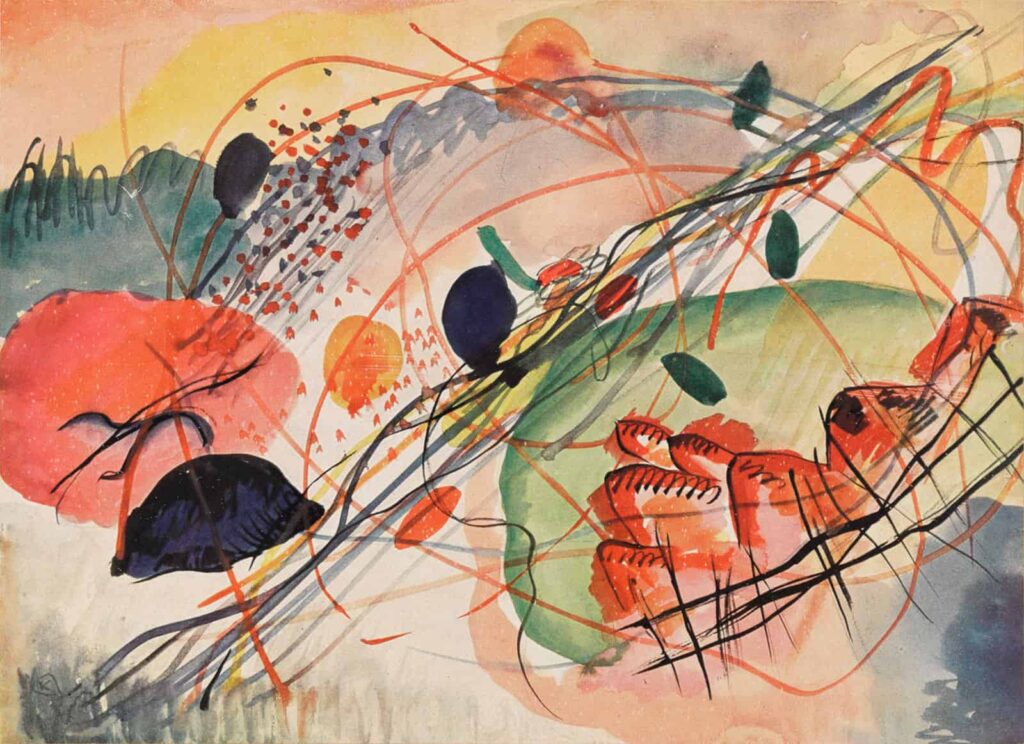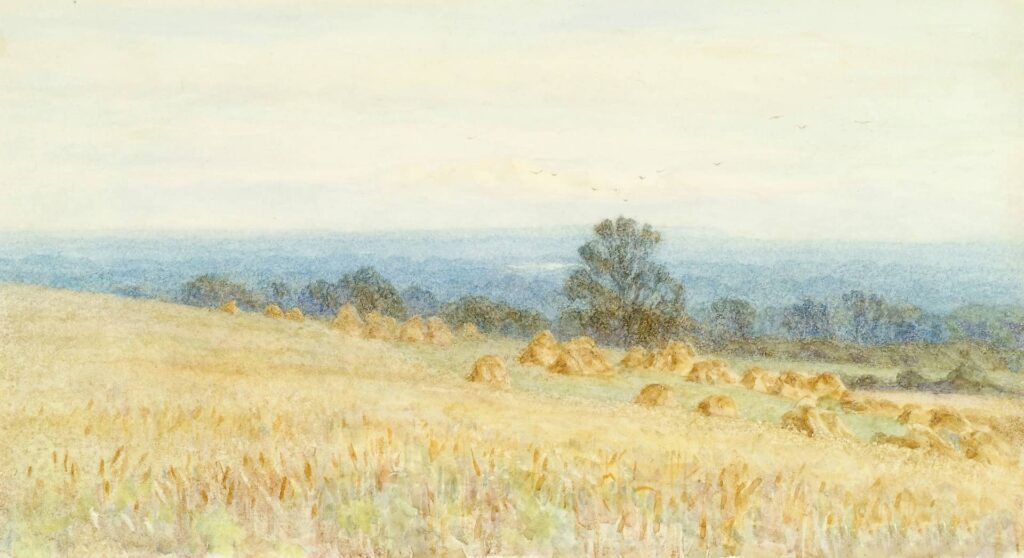Subject Matter in Art: What it Says About the Artist

Art is a beautiful expression of human creativity, simply because it does not need to be confined to a single person’s experience or definition. What the artist attempts to portray in their painting, drawing, or sculpture, could be worlds away from what viewers experience. Art is almost like a living being, in that everyone will view it differently and have different opinions about the same piece.
The subject matter of a chosen artwork, however, can reveal a great deal about the artist. Some artists have made their careers by painting landscapes, creating abstract sculptures, or drawing graphic art. Each form of expression reflects the artist’s vision.
If you enjoy experiencing art, you may have wondered why artists choose a particular subject matter. Or, you may have wondered what their chosen subject matter says about them. We’re going to explore these subjects in this article to examine what subject matter in art reveals about the artist.
Related: Q&A With Linda Litteral
What Is Subject Matter in Art
Subject matter in any art piece can be subjective, but most scholars agree that three main components can be considered the subject matter in an art piece. These three main components include the focal point of an art piece, the form used to create it, and the intention behind the artist’s creation.
Now, to simplify, we will focus on the main component of subject matter, which is the topic, focus, or principal image contained in the art piece. For some pieces, determining the subject matter is easy.
You may see a drawing or painting of a dog sitting in a field. In this instance, the dog is the subject matter. Or, you may see a sculpture of a woman holding a child. In this piece, the subject matter would most likely be the relationship between a mother and her child.
Other times it may be more challenging to determine the subject matter. Abstract artwork, in particular, can present a challenge in determining the subject matter. For this type of artwork, the subject matter could be the piece’s theme, texture, or color. It can even be how these different elements relate to one another.
A classic example of subject matter in abstract art would be Wassily Kandinsky’s watercolor paintings. His paintings had no clear objects or subjects, as Kandinsky found art to be a profoundly spiritual experience.
The subject matter of his art was the intention behind its creation. Kandinsky wanted to showcase the volatility and depth of human emotions and the chaos involved in the human experience.
Determining the subject matter of a piece of art is the first step to figuring out what it says about the artist. Once you’ve made that determination, you can begin exploring what certain subject matters may say about the artist.

What Subject Matter Says About The Artist
We’re going to discuss some of the most common subject matters found in art and discuss what those subjects could potentially say about the artist. Let’s start by discussing one of art’s most common subject matters.
People
People have been a common subject matter of art for most of human history and date back to the oldest cave paintings. For as long as humans could create art, they’ve made people the main focus.
This could say many things about the artist. When people are depicted in focus with normal-looking or happy faces, this could indicate the artist’s belief in the overall goodness of people. It could also represent the artist’s focus on connecting with other people, especially through their art.
If an artist depicts people in odd positions, with disturbing expressions or their subjects are wildly out of focus, this could have a darker connotation. It could represent the darker side of humanity or how the artist feels about themselves.
Related: Q&A With Anna Stump
Still-Life
Still-life artwork is an artist’s depiction of an arrangement of objects. When an artist chooses to focus on still life, it could say many things about them. The most common example would be a bowl of fruit, which is used in countless art classes around the world.
The artist might be trying to portray the value of noticing the small things in life and appreciating the details in everyday objects. In some older pieces, wealthy clients commissioned the artists to highlight the luxuries within their lives. Or, on the darker side of things, they may be trying to show how they feel stagnant in life. Some still-life paintings even cause one to think about the transient quality of life and the fact that all moments eventually pass.
Still-life artwork is one of the most common forms of art because there are so many different ways it can be portrayed. It could say many different things about the artist. It also reflects the specific society and culture that existed around them at that period of time, so it’s essential to look at other aspects of the artwork (such as light or colors) in order to determine what it says about the artist.

Landscapes
Landscapes are another highly popularized subject matter in the artwork. Often, determining what this says about the artist is simple. If they paint a gorgeous, crystal-clear lake surrounded by strong, tall pine trees on a vibrant summer day, then the artist likely loves and appreciates nature’s beauty and wants to share that appreciation with others.
However, the meaning could be darker if an artist paints a patch of forest covered in mist or a barren desert with a scorching sun in a vast sky. This could indicate that the artist is in a difficult place in their life and may feel barren or unfilled.
Some periods even have specific themes that they return to time and time again. For example, 17th-century paintings from the Netherlands often had the sky itself take on a dominating position within the painting. Whether the sky was clear, stormy, or some mix between the two provides commentary on their setting. For example, The Windmill at Wijk bij Duurstede by Ruisdael has dark clouds overhead by light peaking through in the distance, perhaps implying that the artist believed good times would soon be there to relieve the people from their troubles.
Do you have a passion for art and want to engage more with the art community? Sparks Gallery offers workshops and events, as well as showcasing emotive artwork.
Historical and Cultural Events
In many cases, art will depict a historical event, an element from history, or even just what life was like at the time. Emanuel Lezutze Washington’s now famous picture of George Washington crossing the Delaware is a great example. Art like this captures a moment in time and delivers it to the future.
These moments are often political in nature. Pictures of leaders delivering speeches or armies at famous battles are very popular. They don’t need to be political, but they often tend to be.
The fact that the artist chose to depict something specific like this gives a lot of insight into the artist. If they depicted a moment from history that they witnessed, it tells you that they saw (or sometimes heard about) this event, and they deemed it something worth preserving. If they depicted something famous that happened at the time, it shows you what the society of the time saw as important and gives a clue as to how they viewed what was happening. If they depicted an event from the distant past, it shows that the people of their time still saw that piece of the past as something worth preserving.
All of these examples are glimpses into the artist’s mind, and the culture surrounding them. The artist may have chosen to depict an event to elevate and celebrate it, like the previously mentioned crossing of Delaware. However, they may have chosen to do so to judge and condemn what was happening, like Pablo Picasso’s masterpiece Guernica, which shows the brutality of the Nazis during the Spanish Civil War. The artist may have chosen to depict something to call attention to it, leaving interpretation to the viewer. Being receptive to the artist’s historical context and mindset can help you to understand the basis for the selection of their subject matter.
What Subject Matter in Art Says About The Artist Is Sometimes Subjective
There’s an ongoing debate in the art community concerning whether all art is subjective or not, but that’s a debate for another day. Unless you know an artist personally and can ask why they focused on a particular subject matter, you’ll never know definitively what their piece says about them.
There are clues, however, that you can take from an art piece’s subject matter to determine what it says about the artist, or you may see something that no one else does. That is the beauty of experiencing art.

